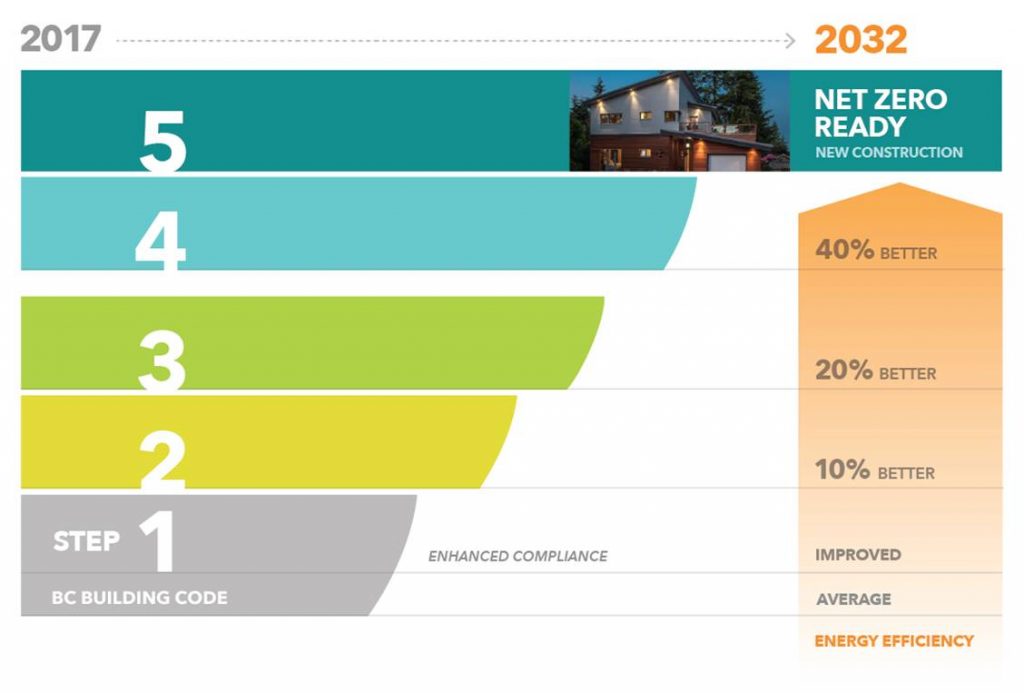Imagine you’re at a dinner party, and the friend you brought along starts into a story with the phrase “So they’re proposing some changes to the Ontario Building Code….” Oh no, oh no. What have I done? Eyes are glazing over. People are eyeing the bathroom for a speedy exit. Is she going to talk about insulation requirements next??? But the next sentence stops people in their tracks: “And if they do this right, we could eventually cut pollution from buildings down to zero.”

Okay, so maybe it’s still a bit of a yawner for some. But in the era of climate change dominating dinner conversations around the world, it can’t hurt to have some hopeful solutions up your sleeve, and stats to back them up. Here’s one to start with: buildings produce 22 per cent of Ontario’s emissions – almost one quarter of our total greenhouse gas pollution. That’s huge. In some urban centres like Toronto, the energy used to heat, cool and light buildings can reach 50 per cent of emissions! And Ontario’s population is growing rapidly, so if we don’t turn things around quickly, these emissions will increase rapidly as well. We need to do a lot more than turning the lights off at night. We need to think way bigger.
That’s where changes to the building code come in. Every five to seven years, the province brings in a new code to reflect new priorities and changes in the industry. We’re now in a consultation period for a new building code in 2019, with a special focus on how to improve energy efficiency requirements and support implementation of the Ontario’s Climate Change Action Plan. An updated code could set a path for new buildings to produce zero or near-zero greenhouse gas emissions, and reduce energy costs too. For more ideas to bring Ontario closer to net-zero building, check out the Clean Economy Alliance’s new report on The Future of Buildings: Getting Ontario Ready for Net-Zero.
The potential changes released for consultation are promising. They lay the groundwork for phased efficiency requirements for homes, mandatory electric vehicle charging stations in multi-residential buildings, more efficient insulation and building envelopes, better infrastructure for green roofs and solar-ready roofs, grey-water systems, water conservation, and many more changes that will reduce emissions and make our buildings more comfortable too.
However what we’d like to see more clearly is a committed pathway to net-zero or near-zero buildings, and strong tools for municipalities to take the lead if they want to and lower emissions more quickly in their own jurisdictions. This is an important step because in some municipalities (especially urban centres), buildings are responsible for a large slice of total emissions. Municipalities with their own climate change plans and targets, like Toronto, need to be empowered to tackle emissions from buildings more aggressively.

B.C.’s recently implemented Step Code provides an exciting model for Ontario’s updated building code. This step code provides a clear and consistent path for local governments to adopt “a series of measurable, performance-based energy-efficiency requirements for construction that builders can choose to build to, and communities may voluntarily choose to adopt in bylaws and policies.” This approach has been widely applauded for its focus on reducing emissions, and is valued among builders for its predictability.
Now that the conversation has begun and changes are on the horizon, we will continue to push for ideas that pave the way for net-zero and near-zero buildings. So while building envelope efficiency may not be a sexy dinner party conversation at the moment, we may someday find ourselves high-fiving around the table after discovering that our air leakage rate has been cut to almost zero.








